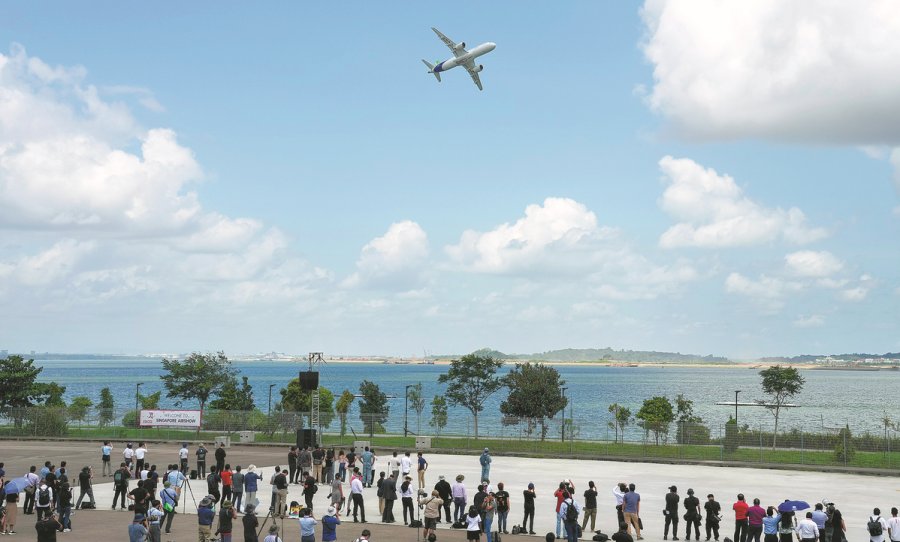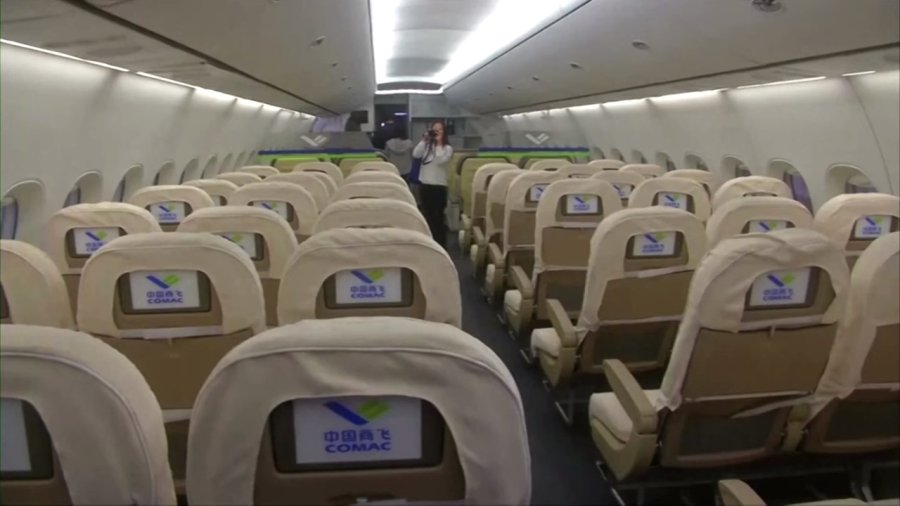March 6, 2024
DHAKA – After making its international debut at the Singapore Airshow last month, China’s state-owned Commercial Aircraft Corporation (COMAC) is now taking its two new planes through at least five other countries in the region, possibly to bolster regional sales.
The Shanghai-based aircraft manufacturer said in a statement that it’s C919 and ARJ21 jets will conduct displays in Vietnam, Laos, Cambodia, Malaysia and Indonesia, over the course of two weeks.
COMAC’s C919, the country’s first domestically-built large passenger jet, is a single aisle jet, fit to carry up to 192 passengers.
Until recently, the aircraft had only been flying within Chinese territory with China Eastern Airlines.
The COMAC C919 has been compared to the Boeing 737 MAX and the Airbus A320 family, successfully completing China’s aim of producing home-grown jets as a part of the country’s plan to reduce reliance on the western companies for aircraft, and be generally more self-reliant.

A C919 aircraft, China’s domestically developed and manufactured single-aisle passenger plane, conducts a flight performance at the opening of the Singapore Airshow, marking its debut at an overseas air show. PHOTO: CHINA DAILY
The C919 aircraft has been in the works for over a decade now, with its development beginning in 2008.
Still, it might be very early to assess how much impact the aircraft will make in the international aviation market which has been largely dominated by a duopoly of western companies – the European aerospace corporation Airbus and the American corporation Boeing, that have been in existence since as early as 1916.
In the immediate, it does seem quite likely that C919 and the ARJ21 will likely meet China’s own burgeoning needs in the world’s fastest growing aviation market.
The ARJ21 is China’s first home-developed regional passenger jet, and the plateau variant has good crosswind resistance at high-altitude airports.
Currently, more than 110 ARJ21 aircraft are in commercial operation, with most operating at regional airports, China Daily reports.
A Boeing China Current Market Outlook report, dated September last year, estimated that during the next 20 years, domestic airlines are expected to purchase 7,240 aircraft valued at US$1.1 trillion.
“The country will have a demand for 5,420 new single-aisle airplanes, accounting for 75 percent of total new deliveries,” the report stated.
As part of the 14th Five-Year Plan (2021-2025), the Civil Aviation Administration of China has been implementing an initiative to better integrate regional connectivity with the trunk air travel market. And experts believe this will significantly increase the need for more aircrafts.
According to Mr Mike Yeomans from IBA Aviation Consultancy, the C919 has a strong opportunity to gain market share, particularly in its domestic market, with Airbus and Boeing narrow-bodies in the A320neo and 737 Max families sold out for most of this decade.
“The immediate challenges for COMAC are around production to meet local demand and certification to penetrate international markets,” he told The Straits Times.
The C919 is currently only certified by China’s aviation authority.
The lack of international certification means the C919 cannot operate in countries that do not recognise China’s civil aviation regulator.
Mabel Kwan, managing director at consultancy Alton Aviation, told The Associated Press: “Most of the orders come from Chinese airlines and the challenge moving forward is that to have a sustainable future, COMAC must demonstrate that they are able to go beyond Chinese shores.”
Still, competitors are keenly tracking its progress.

A view of the interior of the COMAC C919. PHOTO: THE STRAITS TIMES
According to a report by The Straits Times, the chief executive of Airbus commercial aircraft, Christian Scherer, said: “We certainly don’t want to stick our head in the sand…
“The cake is growing sufficiently for COMAC to want to compete. It would be a mistake to dismiss the contest brought by Chinese aircraft manufacturer COMAC to the aviation sector, even though its C919 passenger jet is not going to rock the boat significantly,” he said.
At the Singapore Airshow, COMAC made some progress, having received an order for 40 C919 and 10 ARJ21 jets from Tibet Airlines, a regional carrier based at Gonggar Airport in Lhasa, Xizang autonomous region. Tibet Airlines mainly flies domestically but also has routes to places such as Kathmandu in Nepal.
Previously, Brunei-based GallopAir had signed a letter of intent to purchase 30 aircraft from COMAC. Indonesian low-cost carrier TransNusa, also operates a small fleet of the ARJ21 regional jets.
As it seeks international exposure, COMAC must also deal with the existing issues of the industry, the most challenging being those tied to supply chain and production – both Airbus and Boeing have been repeatedly facing these issues.
According to a 2020 analysis by Center for Strategic and International Studies (CSIS), 90 per cent of C919’s component suppliers are from the western world, specifically North America and Europe, and only 10 per cent came from China and other Asian countries.
However, Beijing, being well aware of the status quo, has been working to steadily increase the percentage of domestically developed parts and components to make its supply chains more robust.
There are concerns, however, that the state of relations between China and the US could further strain China’s supply chain network for components.
For COMAC, there might still be quite a few significant barriers to cross before it can strive to claim a significant share of the air transport market.
But its future holds promise.


